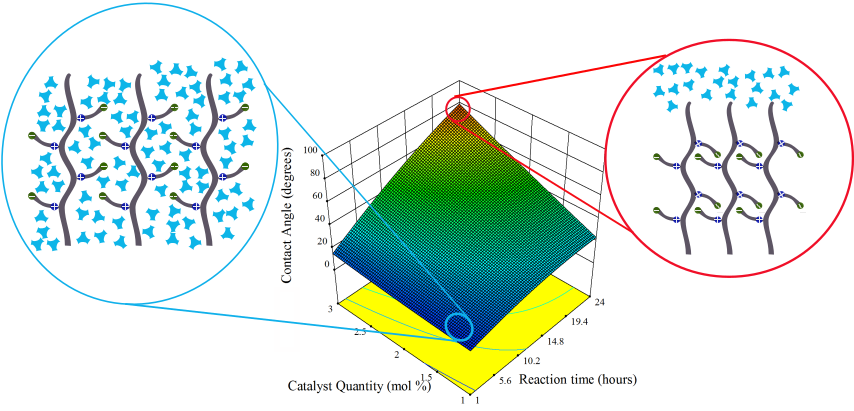Predictive Model for the Design of Zwitterionic Polymer Brushes: A Statistical Design of Experiments Approach.
Published in ACS Applied Materials & Interfaces, 2016
Recommended citation: Kumar, R. & Lahann,J. (2016) ACS Applied Materials & Interfaces, 8 (26), 16595-16603.

Employing a design of experiments (DOE) approach, we identified operating boundaries within which four gel architecture regimes can be realized, including a new regime of associated brushes in thin films. Our statistical model can accurately predict the brush thickness and the degree of intermolecular association of poly[{2-(methacryloyloxy) ethyl} dimethyl-(3-sulfopropyl) ammonium hydroxide] (PMEDSAH), a previously reported synthetic substrate for feeder-free and xeno-free culture of human embryonic stem cells. DOE-based multifunctional predictions offer a powerful quantitative framework for designing polymer interfaces. For example, model predictions can be used to decrease the critical thickness at which the wettability transition occurs by simply increasing the catalyst quantity from 1 to 3 mol %. Download paper here